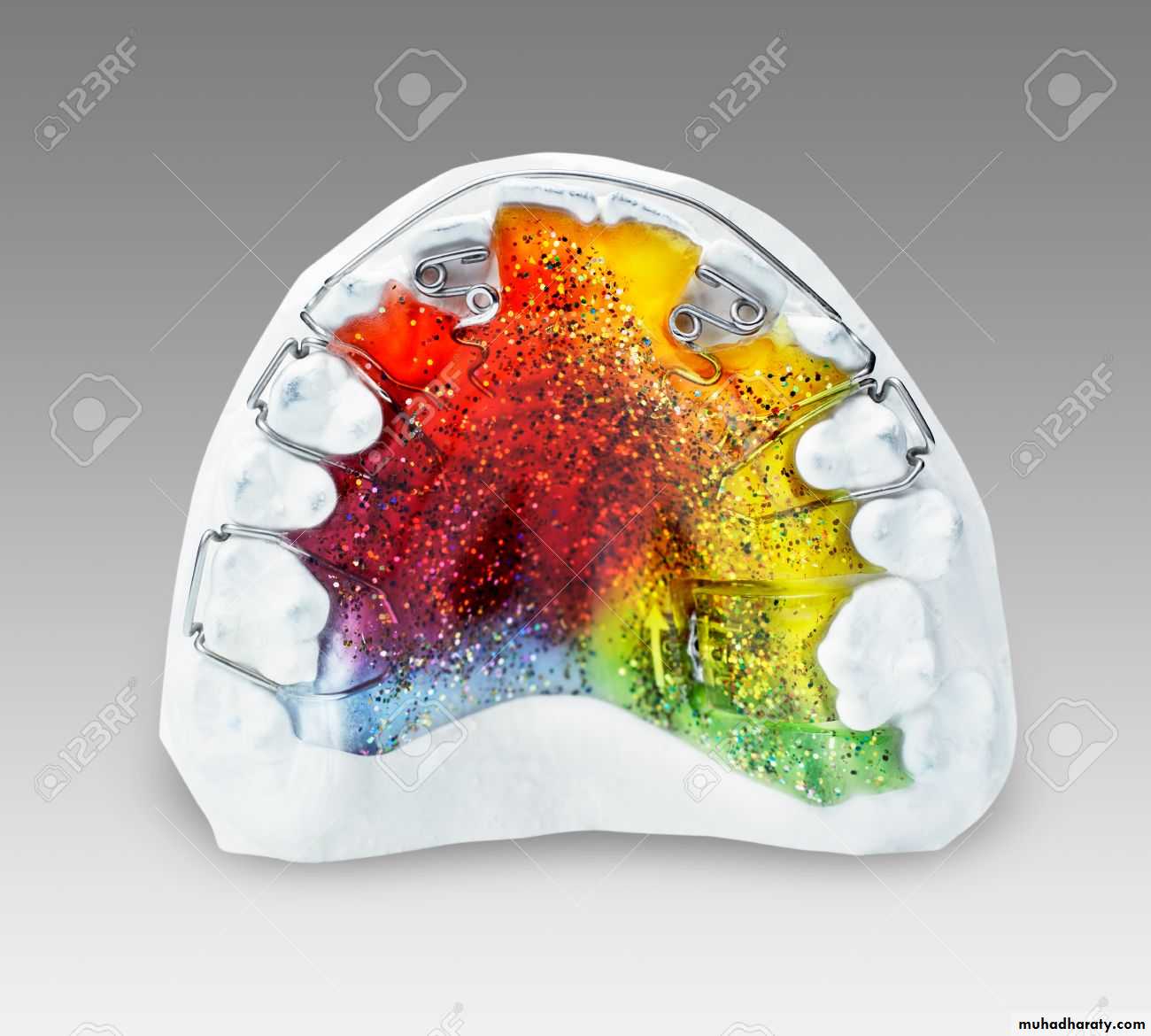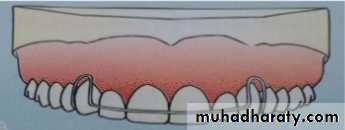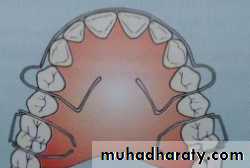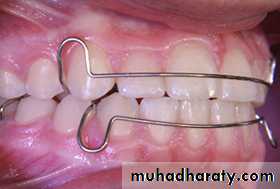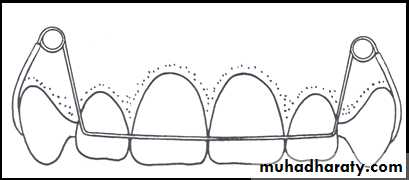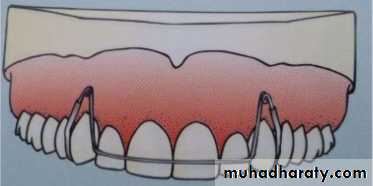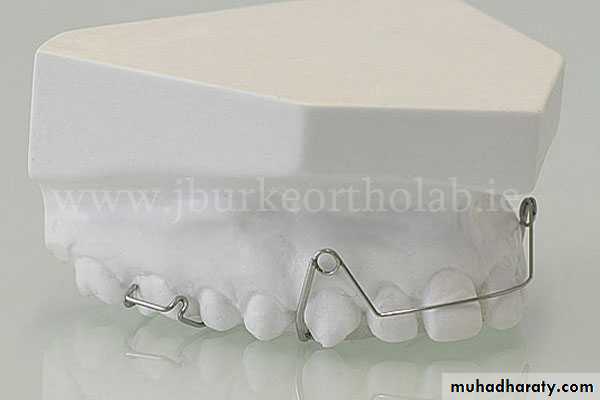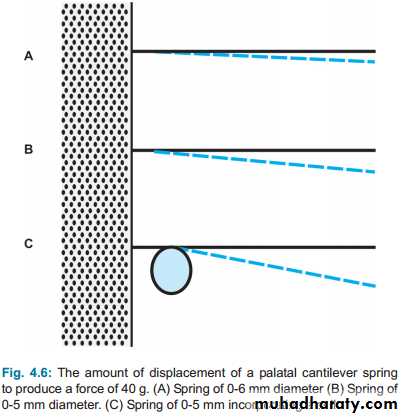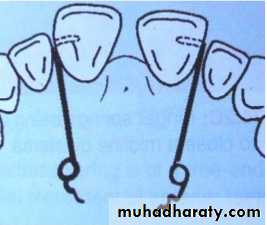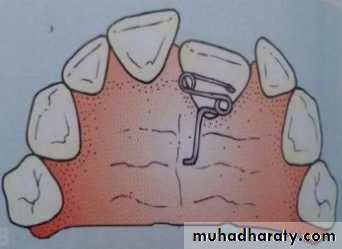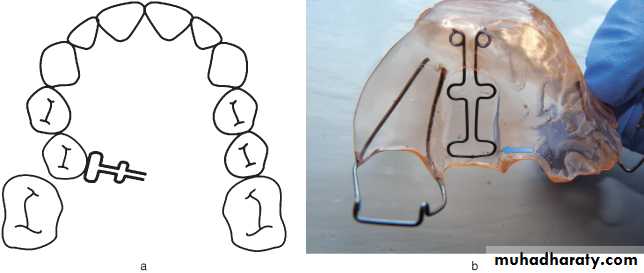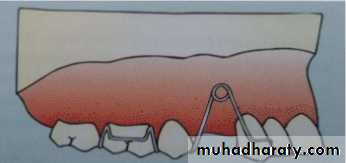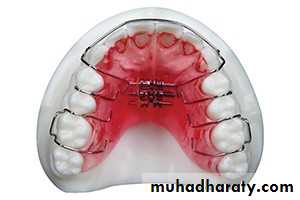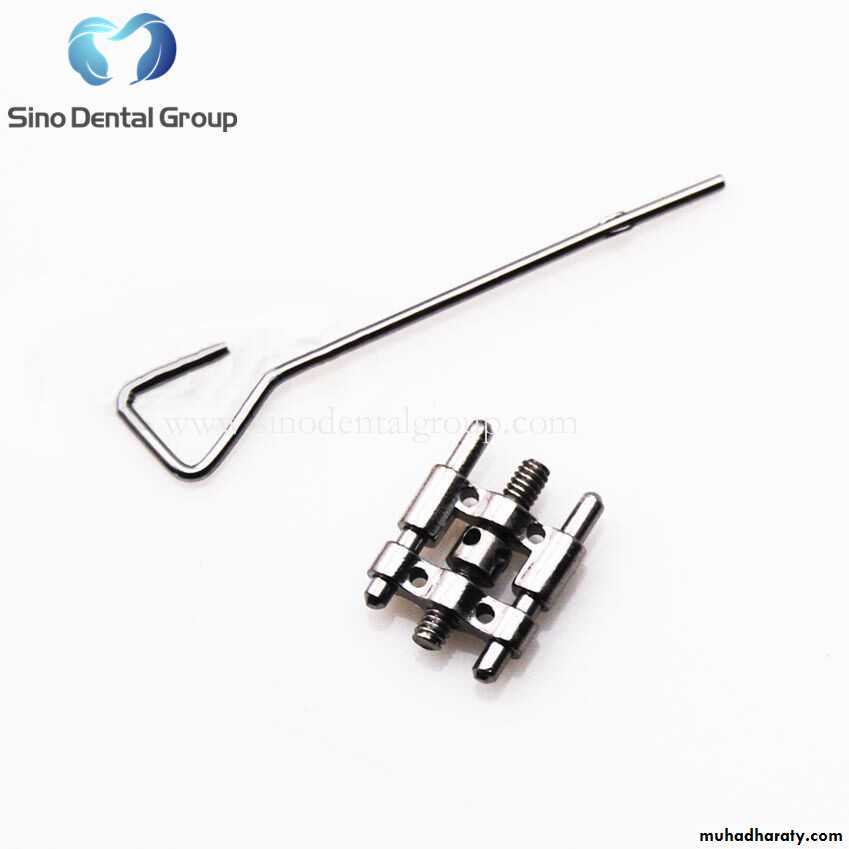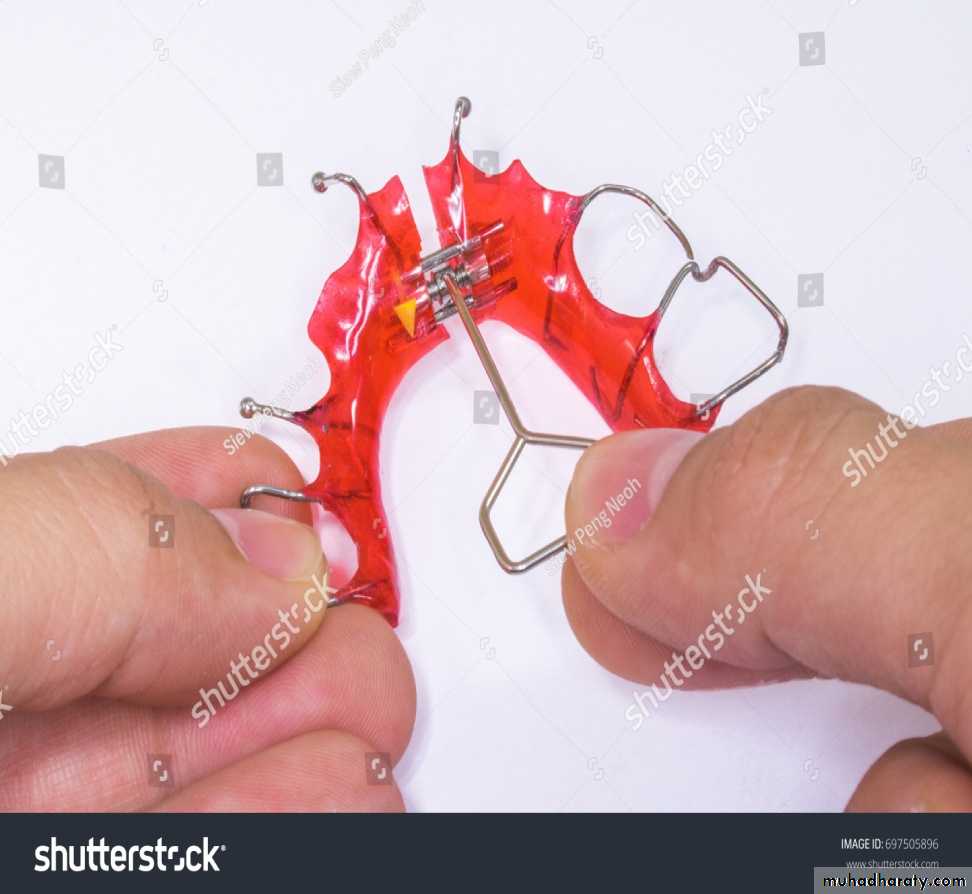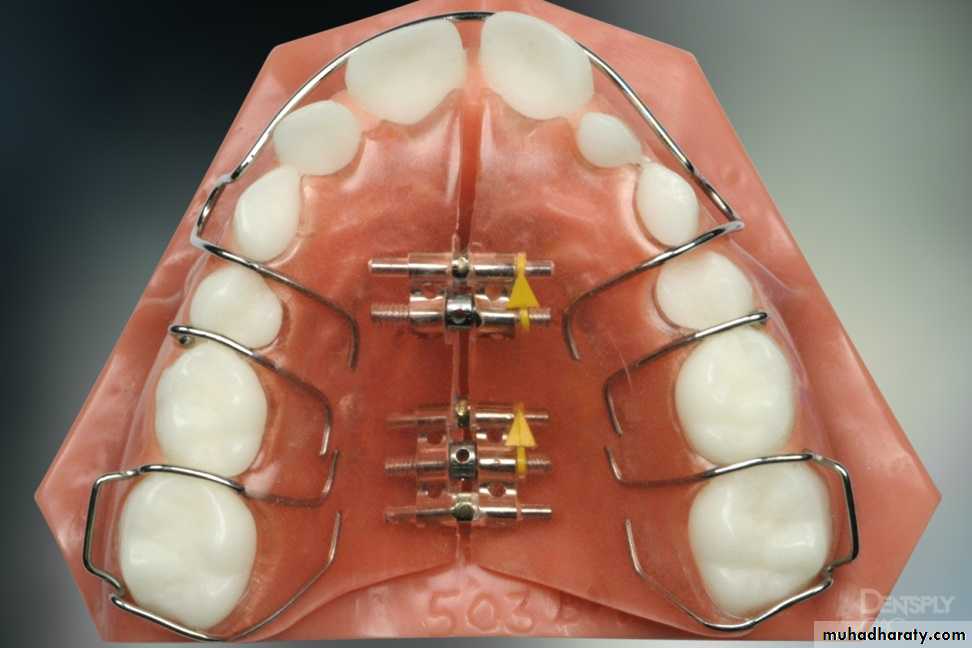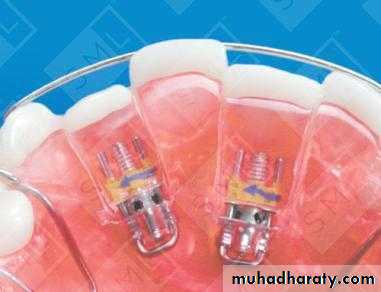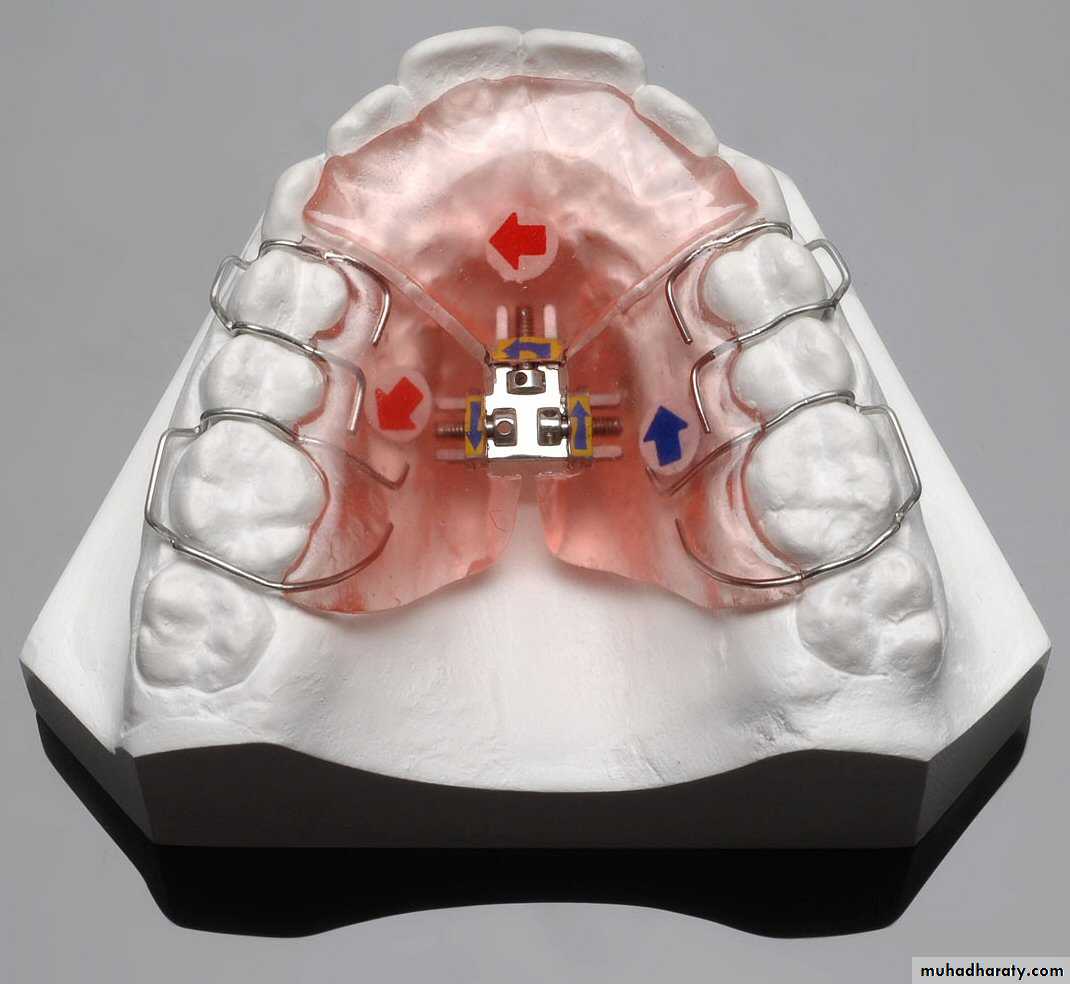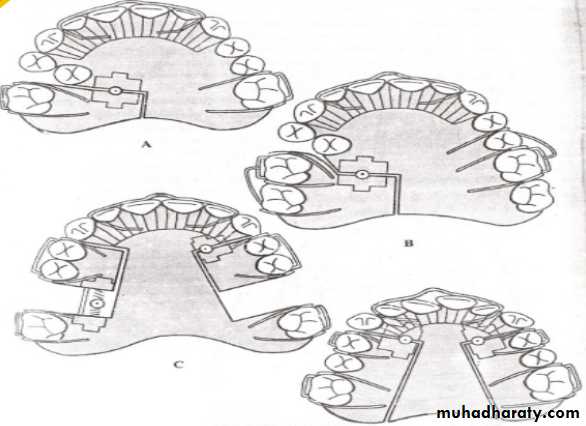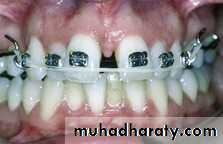Components of Removable Appliances
REMOVABLE ORTHODONTIC APPLIANCES
Removable orthodontic appliances are devices that can be inserted into and removed from the oral cavity by the patient at will.Components of Removable Appliances :
• ACTIVE COMPONENT
• RETENTIVE COMPONENT
• BASE PLATE
Active component of removable orthodontic appliances
They are components of the appliances that exert forces to bring about the necessary tooth movements .The active component includes :
• (a)bows
• (b)springs
• (c)screws
• (d)elastics
Bows
Bows are active components that are mostly used for incisor retraction . Types of the bows :
(a) Short labial bows
(b) Long labial bows
(c) Robert’s retractor
• Short labial bows
• They are constructed using 0.7mm hard round stainless steel wire . It consist of bow that make contact with the most prominent labial teeth and two U loops that ends as retentive arms distal to the canine . The short labial bow is activated by compressing the U loop .Indication : Minor overjet reduction and anterior space closure .
(b) Long labial bowsIt is similar to short labial bow except that it extends from one premolar to the opposite premolar. • Distal arms of U loop are adapted over the occlusal embrasure between the two premolars to get embedded in the acrylic plate. Activation similar to short labial bow.
Indications :
Minor anterior space closure.Minor overjet reduction .
Closure of space distal to canine.
Guidance of canine during canine retraction .
As a retaining device at the end of fixed orthodontic treatment.
(c) Robert’s retractor. This is a labial bow made of thin guage stainless steel wire having a coil of 3mm internal diameter mesial to the canine . As very thin wire is used for its fabrication ,the bow is highly flexible and lacks adequate stability in the vertical plane . Thus the distal part of the retractor is supported in a stainless steel tubing of 0.5 mm internal diameter .
Indications :- Patient having severe anterior proclination with over jet of over 4mm .
springs
DESIGN OF SPRINGTo design a spring for its action different factors are
considered i.e. cantilever spring.
1. Wire dimension:Flexibility of wire depends on the
length of wire and its diameter. Force generated
by a given deflection of a simple cantilever spring is directly proportional to the fourth power of its
diameter and inversely to the cube of its length.
DIAMETER OF WIRE :- Flexibility depends upon diameter of wire used. Thicker wire --> Decrease flexibility of spring and apply greater force. Doubling Diameter --> Force increases by 16 times. Decreasing diameter lead to that the force applied become lesser, and spring remains more flexible and active over a longer period.
LENGTH OF WIRE :Force decreased when the length of wire increases. Longer spring , is more flexible and remain active for a longer duration of time. Helices and Loops incorporated in the spring make them more active. Doubling the length the force can be reduced by 8 times. Force to be applied :Force that should be generated by the spring is calculated by Number of teeth to be moved ,Root surface area and Patient comfort
2. Force: For a single rooted tooth, it should be in the range of 25-40 gm. Excessive forces delay tooth movement overload anchorage and cause discomfort to patient.
springs
Finger springFinger spring is also called single cantilever spring as one end is fixed in acrylic and the other end is free . It is constructed using 0.6mm wire . It consist of active arm of 12-15mm length ,a helix of 3mm internal diameter and retentive arm of 4-5 mm length . It is used for mesio distal tooth movement when teeth are located correctly in bucco lingual direction .it is activated by moving active arm toward the teeth intended to be moved .
Z spring
The ‘z’ spring is also called double cantilever spring . It is made up of 0.5mm wire . The spring consist of two coil of very small internal diameter .it should be placed perpendicular to palatal surface of tooth . The spring can be made for movement of single incisor or two incisor . It is activated by opening helices by about 2-3 mm at a time .T spring
It is made of 0.5 mm wire . The spring consist of t shaped arm whose arm are embedded in acrylic. It is used for buccal movement of premolar and some canine . It is activated by pulling the free end of the t toward the intended direction of tooth movement.Buccal canine retractor
It is indicated in bucally placed canine and canines placed high in the vestibule . They are used to move canine in distal as well as palatal direction . It consist of a coil of 3mm diameter , an active arm and a retentive arm .Buccal canine retractor are of two types supported self supported Self supported are made of thicker gauge wire(0.7mm) so that the spring can support itself and supported are made of thinner gauge wire (0.5mm) thus they are more flexible and mechanically efficientScrews
Screw are active component that can be incorporated in a removable appliance . Screw can be activated by the patient at regular intervals using a key . Removable appliances having a screw usually consist of split acrylic plate and adams clasps on the posterior teeth. The screw is placed connecting the split acrylic plate .screw key
Screw can bring about three types of movement :-
(a) expansion of arch .(b) movement of one or a group of teeth in a buccal or labial direction .
(c) movement of one or more teeth in a distal or mesial direction

